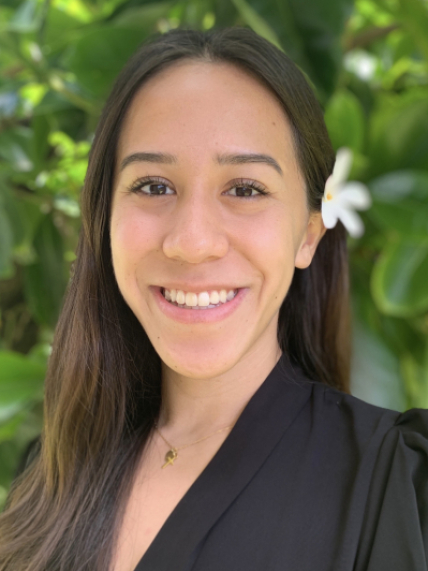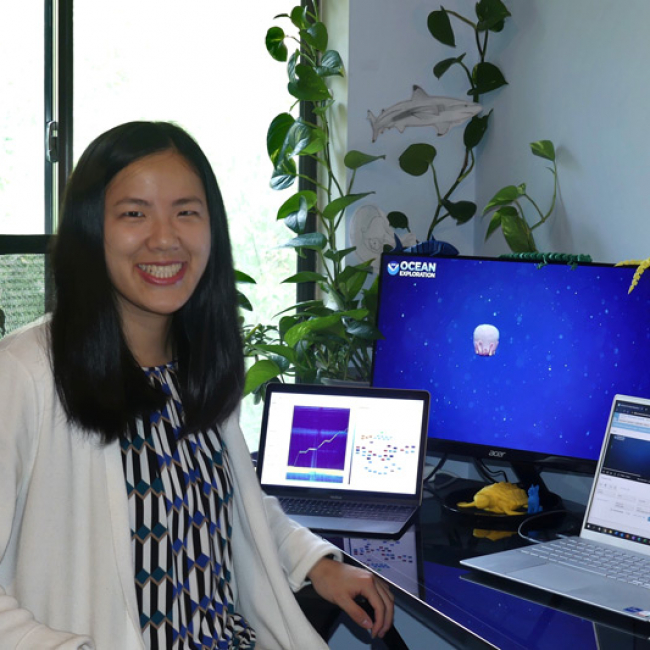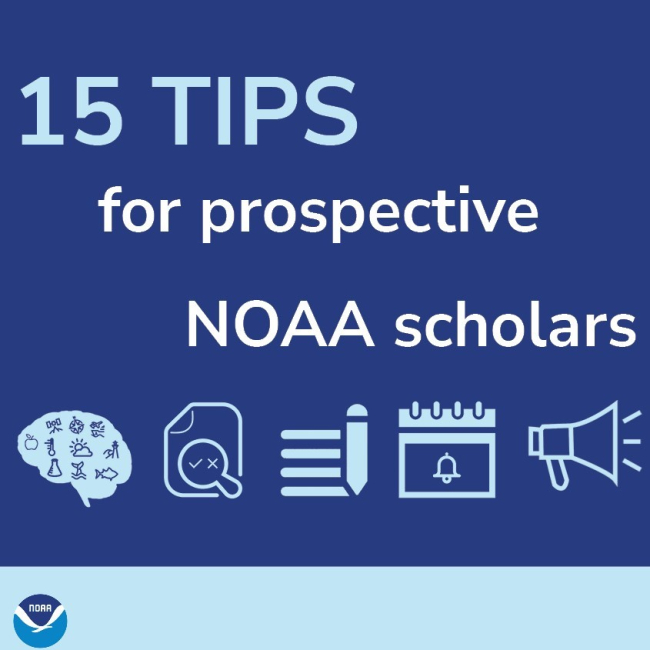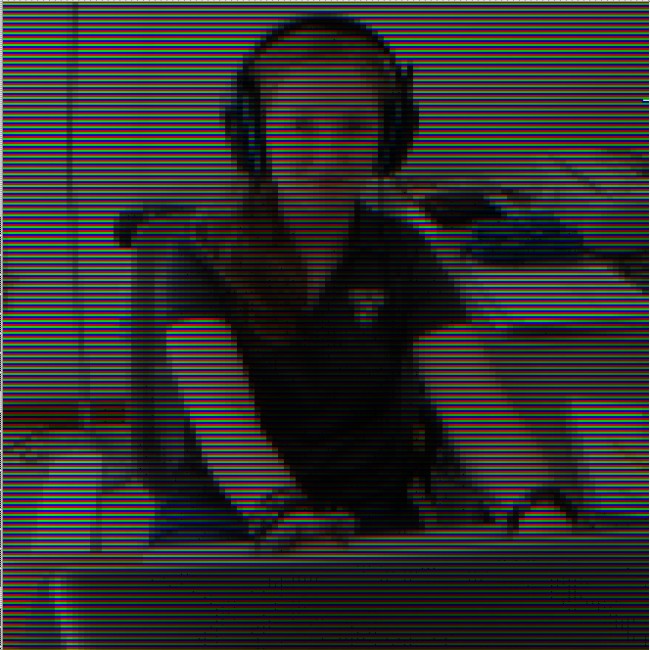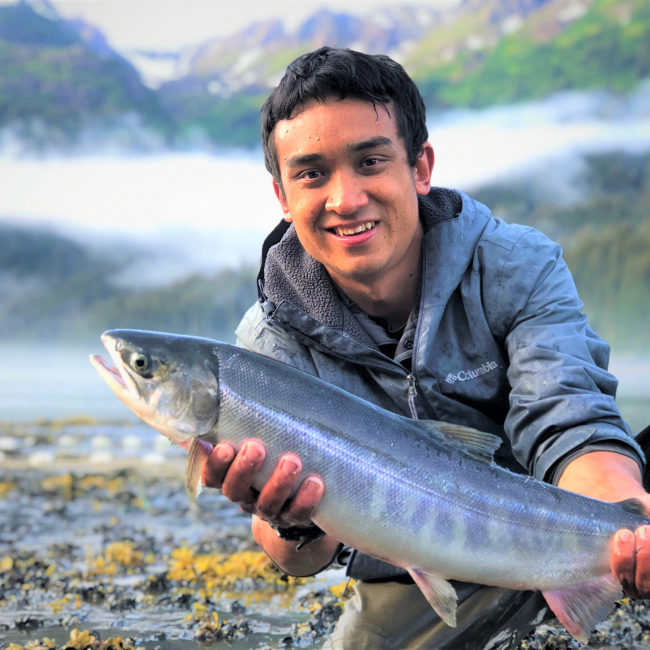NOAA scholars' summer internship topics are as broad as NOAA's mission. Below, we share some of the Hollings and EPP/MSI undergraduate scholars' 2021 summer internship projects. Check back regularly or follow us on Facebook, Instagram, Twitter, and Linkedin offsite link to keep up as we share new internship highlights throughout the application season. Hollings and EPP/MSI undergraduate scholarship applications are open annually from September through January.
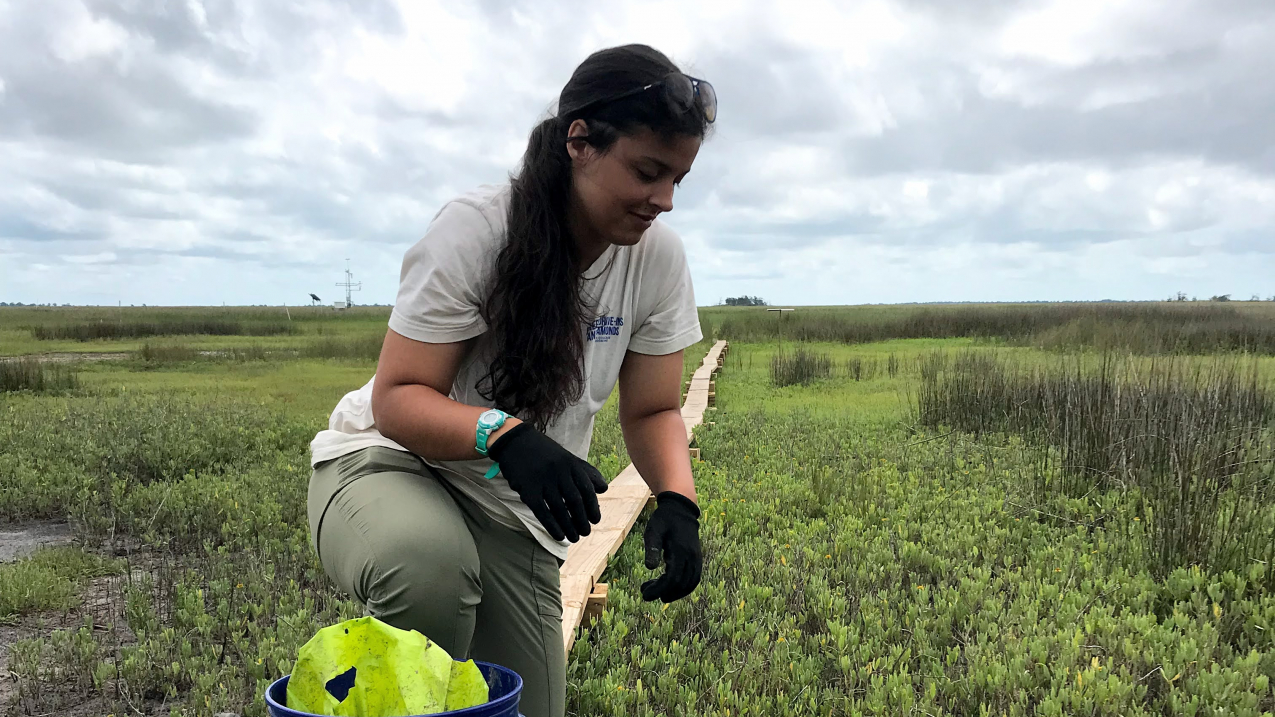
Nadya Gutierrez, a 2020 Hollings scholar, collecting marsh crabs in the field as part of her 2021 summer internship to gather information about crab populations at North Inlet-Winyah Bay National Estuarine Research Reserve. (Image credit: Maggie Pelton)
Navigate the highlights:
Nadya Gutierrez — Investigating the role of small-bodied crabs on salt marsh ecosystem processes.
Helen St. John — Disturbance events at protected seabird nesting sites.
Grace Collins — Humpback Whale Sanctuary research assistant
Emily Fritsche — Sanctuary area profile: Flower Garden Banks National Marine Sanctuary
Samuel Koeck — Marine Science Research and Education Training Program
Tehani Malterre — Sanctuary area profile: Olympic Coast National Marine Sanctuary
Working at a National Estuarine Research Reserve for my Hollings internship allowed me to comprehend the interconnected estuarine ecosystem process, which has given me insight into the value of these ecosystems.
Salt marshes, which are found near estuaries, are important habitats for several species of crabs. Nadya Gutierrez, a 2020 Hollings scholar from Georgia College & State University, spent her summer internship studying marsh crab populations at North Inlet-Winyah Bay National Estuarine Research Reserve offsite link. Her research was aimed at understanding how crab abundance varies through time and at different elevations in the marsh. Listen to a rap that Nadya wrote about her research in When science inspires art: A creative collection of NOAA scholars' research.
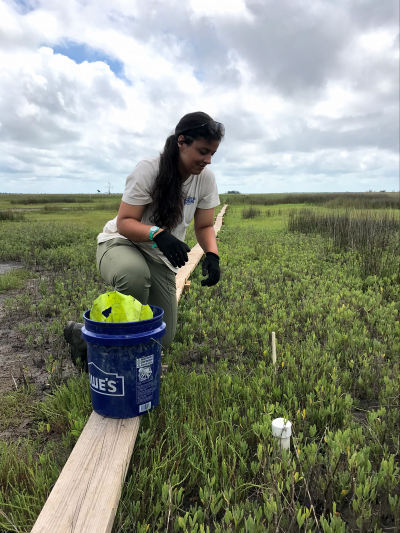
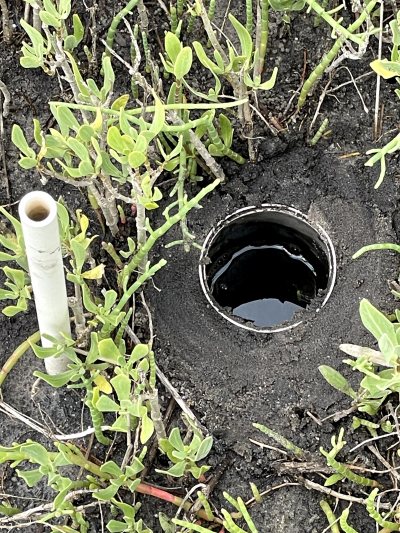
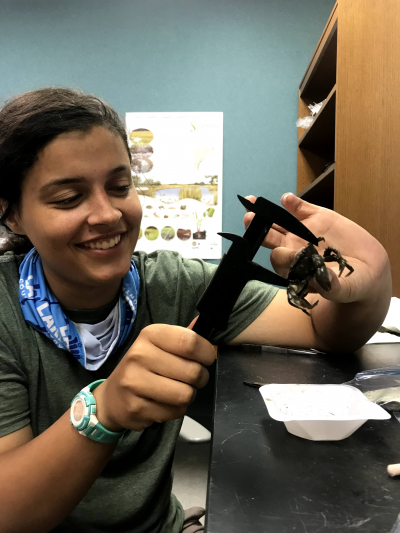
Working at Rookery Bay National Estuarine Research Reserve this summer really showed me how critical estuaries are for aquatic life, and how much more we need to do to protect them.
Estuaries are known for their diversity of wildlife, including seabirds. But, fishing, tourists, predators, and marine debris are all factors that can disturb wildlife. 2020 Hollings scholar Helen St. John of Grinnell College spent her summer internship studying which of these factors was the most likely to cause protected seabirds to temporarily leave their nests in the Rookery Bay National Estuarine Research Reserve offsite link. She found that fishing disturbed seabirds the most. Helen created a comic about her work, which can be viewed in When science inspires art: A creative collection of NOAA scholars' research.
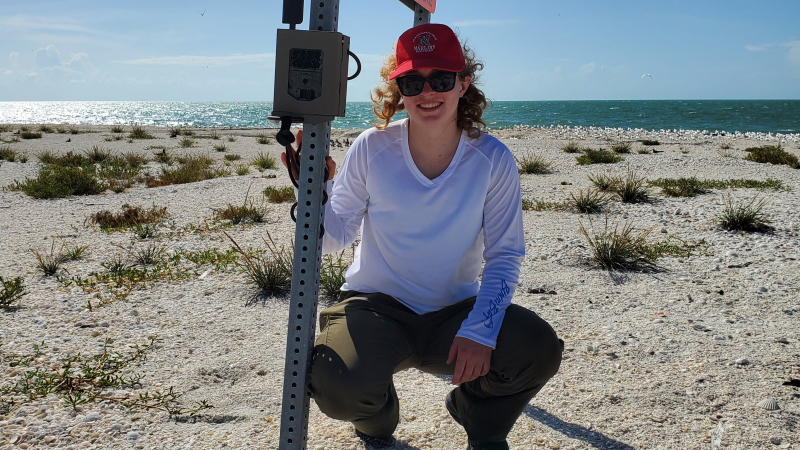
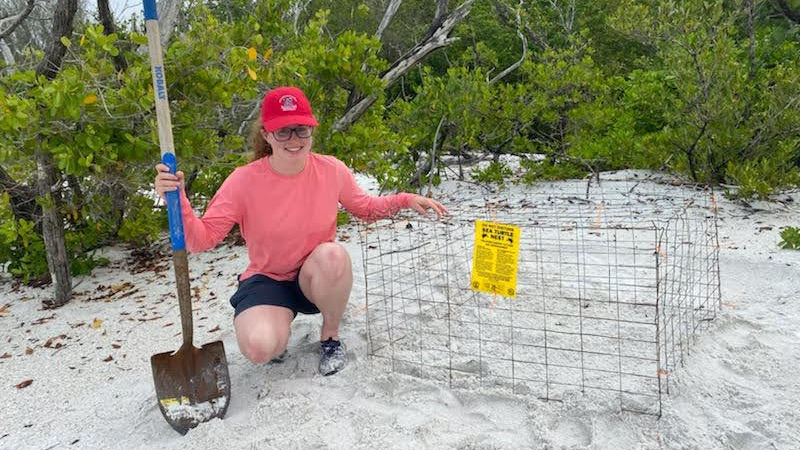
Hollings gave me the opportunity to explore which areas of science were right for me. Now, I feel confident in my ability to work alongside other fields while channeling my strengths within the social sciences and education.
Eni Owoeye is a 2020 Hollings Scholar who worked within the Office of International Activities with co-mentors from the Office of Coast Survey. During her 2021 Hollings internship, Eni researched air pollution emissions generated by the maritime, or waterborne, shipping industry, and strategies to reduce emissions, such as exhaust gas cleaning systems. She analyzed research documenting the increased use of these cleaning systems, called scrubbers, on vessels. She was particularly interested in the environmental and public health considerations, and the federal policy framework to regulate and enforce standards for these systems. Outside of her research, Eni enjoyed learning about the UN Ocean Decade and science diplomacy. In the future, Eni hopes to work more with international environmental issues. Following graduation from New York University, Eni plans to work with an international fellowship to gain more field experience abroad.
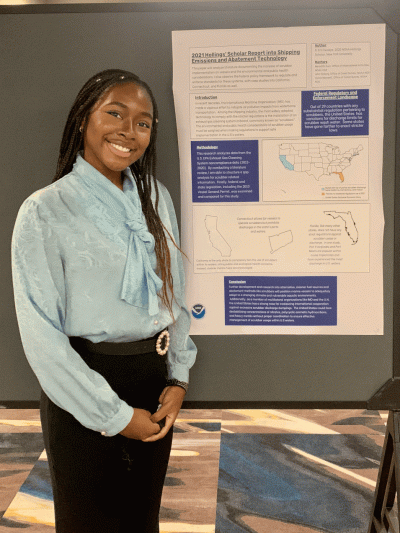
The EPP/MSI program has been a highlight on my path to my career goals of integrating earth and atmospheric sciences with architecture ... I received invaluable feedback, tutelage, and knowledge from the mentors that supported me in my research. The workshops, training, and professional development provided by the EPP/MSI team are experiences that I will carry with me forever.
In the winter, ice forms on the Great Lakes and when it breaks, it can pose a serious risk to life and property, and disrupt the passage of commercial vessels. Derrick Seegars, an EPP/MSI scholar, spent his 2021 summer internship with NOAA’s National Environmental Satellite, Data, and Information Service studying how satellite and remote sensing technology could be used to improve National Weather Service ice breakage forecasts and warnings. After his anticipated graduation from the Architectural Technology program at New York City College of Technology in 2023, Derrick plans to pursue a master’s degree in architecture and then combine his expertise in architecture and environmental science to be a liaison between government agencies such as NOAA and private or public sector development companies to help build a more sustainable future. “This requires all stakeholders, including developers, architects, and engineers to collaborate with atmospheric scientists to better understand how structures have an effect on climate change, and also are affected by it … to promote a more comprehensive [and sustainable] approach to the architecture field,” says Derrick.
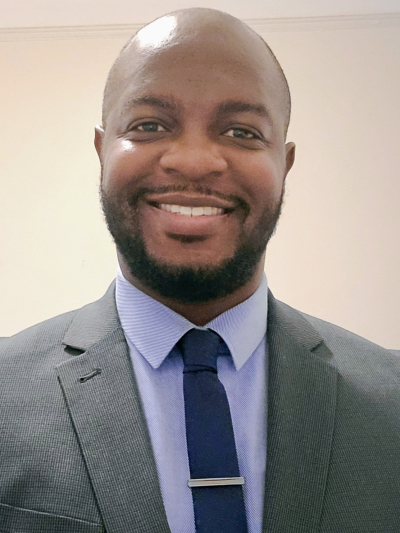
My experience working with the Hawaiian Islands Humpback Whale National Marine Sanctuary for my Hollings internship taught me so much about the newest research methods needed to understand and protect some of the biggest, most beautiful, and most mysterious animals on our planet. It was such a wonderful opportunity and I am so grateful for everything I learned.
Mid-frequency active sonar and vessel noise have been linked to mass-stranding events of whales and dolphins, as well as non-fatal disturbances and behavioral changes. Because of this connection, understanding how human activity affects the ocean soundscape is important. This summer, Grace Collins, a 2020 Hollings scholar and student at American University in Washington, D.C., worked with the Hawaiian Islands Humpback Whale National Marine Sanctuary to compare the timing of human-made noises with marine mammal communication. Her work was part of the sanctuary’s SanctSound project, which uses acoustic data to assess the abundance, distribution, movement, and behavior of marine mammal populations that use the waters as important breeding grounds and habitats. In the future, Grace wants to continue working with island communities to conserve their cultures and environments and to strengthen their resilience in the face of climate change. Learn more about Grace and her project in The Office of National Marine Sanctuary’s story featuring their 2021 Hollings and EPP/MSI summer interns.
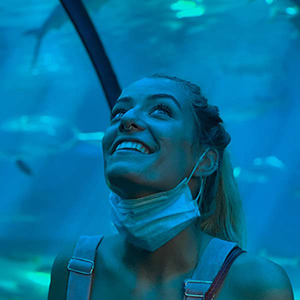
It is truly an honor to be an EPP/MSI scholar! The experiences I have and will continue to gain in this program will prepare me for graduate school and beyond. I gained extensive knowledge of the Flower Garden Banks National Marine Sanctuary during my internship with the Office of National Marine Sanctuaries; and this is extremely special to me as I am a native Texan. I had no idea how rich our Gulf was in its marine life biodiversity!
Emily Fritsche, a 2021 EPP/MSI scholar, spent her summer internship building a sanctuary community profile for Flower Garden Banks National Marine Sanctuary. Emily organized and analyzed socioeconomic data, including population and demographics, community engagement, sustainable uses, and local economies, for the area relevant to the sanctuary. Once published, this profile will support other important sanctuary documents. After finishing her undergraduate studies in biological and physical sciences at the University of Houston-Downtown, Emily plans to use the knowledge gained during this internship to support her graduate school plans and, eventually, a career with NOAA. Learn more about Emily and her project in The Office of National Marine Sanctuary’s story featuring their 2021 EPP/MSI and Hollings intern.
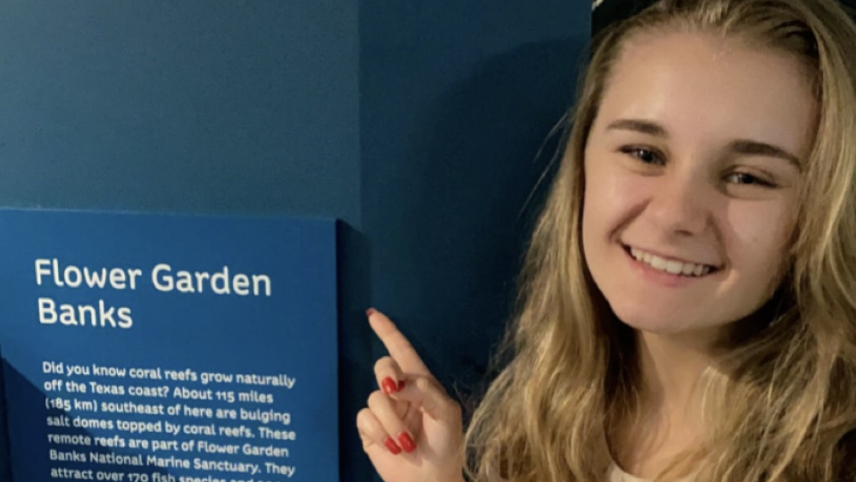
Getting to work in the He‘eia NERR and completing research was an absolutely incredible experience, and allowed me to experience firsthand how science and research can be applied to understand an area in a different context.
Samuel Koeck, a 2020 Hollings scholar from the University of Delaware, explored a new way of measuring water quality at the He‘eia National Estuarine Research Reserve offsite link (NERR) in windward O‘ahu. Central to the reserve’s mission is the biocultural restoration of important land and reef ecosystems, and the improvement of water quality through historic He‘eia ahupua‘a. The ahupua‘a is a land division where culturally-based knowledge and practices are used to manage the natural resources that a community needs to thrive.
Samuel helped explore whether an EPA-based protocol to measure water quality, which is based on part of the reproductive process of the collector urchin (Tripneustes gratilla), could be used at He‘eia NERR. Samuel and an intern in the Hollings Prep Program, Mariko Quinn, used the protocol to assess water quality at different sites around the NERR where mangroves were being removed, which will establish a baseline for water quality as restoration efforts continue in the coming years. After completing his undergraduate degree in marine biology and mechanical engineering at University of Delaware, Samuel hopes to attend graduate school and study the ways that new technologies can be utilized to solve conservation problems in the marine environment. Learn more about Samuel and his project in The Office of National Marine Sanctuary’s story featuring their 2021 EPP/MSI and Hollings interns.
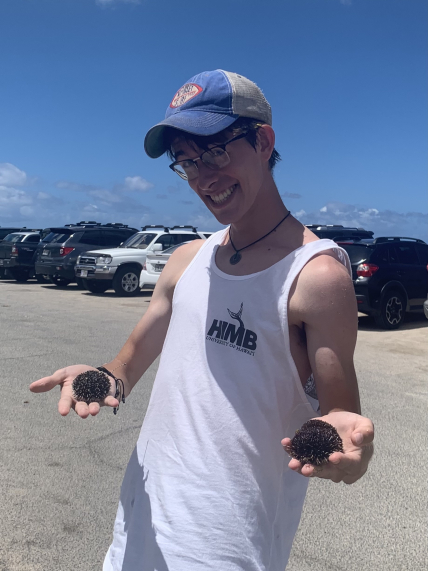
Being able to work at the intersection of such a wide variety of topics [in the EPP/MSI program] has enriched my undergraduate experience by helping me to develop as a scientist and as a citizen in my own community.
Tehani Malterre, a 2021 EPP/MSI scholar, interned with the Olympic Coast National Marine Sanctuary. She was part of a team that collected demographic and economic data for the community surrounding the sanctuary, as well as information about site heritage, culture, tourism, fishing, recreation, and more. The team used this information to prepare a National Marine Sanctuary Community Profile, which reports socioeconomic data surrounding a sanctuary and are essential tools for community outreach and management and decision making processes for NOAA’s marine sanctuaries and monuments. Tehani attends the University of Hawaiʻi at Mānoa where she is majoring in global environmental science. She is in a ‘4+1 program,’ which will allow her to earn both her undergraduate degree and a master’s degree in finance and risk-management insurance within five years. After completing her education, Tehani plans to remain in Hawaiʻi, and help solve environmental issues that impact native species and the Native Hawaiian community. Learn more about Tehani and her project in The Office of National Marine Sanctuary’s story featuring their 2021 EPP/MSI and Hollings interns.
